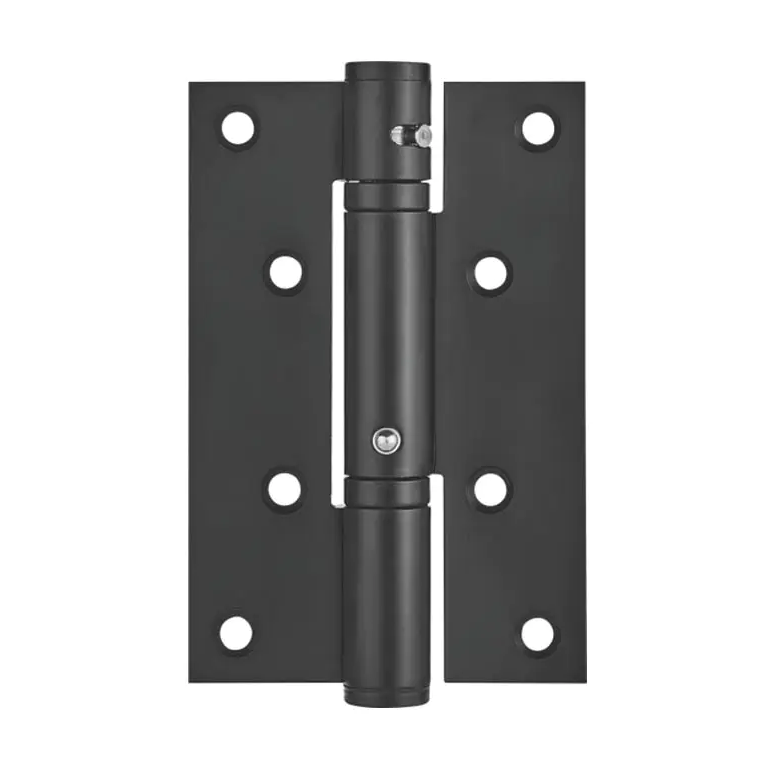Damping Spring Hinges are essential components in modern cabinetry and furniture systems, valued for their ability to reduce noise and wear by providing a controlled, soft-close motion. Unlike traditional hinges that rely solely on mechanical pivoting and spring force, Damping Spring Hinges integrate both elastic and damping mechanisms to deliver smooth and silent door closures. Understanding the damping principle behind these hinges requires examining the interaction of multiple physical forces, primarily involving springs and damping mediums such as hydraulic fluid or air resistance.
At the heart of a Damping Spring Hinge is a torsion or compression spring that stores energy when a door is opened. This spring ensures the hinge has enough force to return the door to a closed position. However, if this spring operated alone, as in conventional spring hinges, the door would slam shut with potentially damaging force. To mitigate this, a damping mechanism is introduced. This mechanism is often a small cylinder containing hydraulic fluid or air that creates resistance against rapid motion. As the door begins to close, the spring force pushes the hinge arms toward the closed position, but the damping system resists this movement, thereby slowing down the speed of closure in the final few degrees.
This damping effect is achieved through the controlled displacement of fluid in a narrow chamber. In hydraulic variants, when the hinge moves, a piston is forced through a fluid-filled cylinder, and the fluid is forced through small orifices. These narrow channels restrict the fluid’s flow rate, which in turn slows down the movement of the piston and, consequently, the hinge. This provides the soft-close functionality characteristic of Damping Spring Hinges. The size of the orifices and the viscosity of the fluid are carefully engineered to ensure consistent damping performance across various door sizes and weights.
Some Damping Spring Hinges use air compression instead of liquid to generate damping. In these systems, as the hinge arm moves, air is compressed or channeled through restrictive pathways, providing similar resistance to motion. While hydraulic systems generally offer smoother and more reliable damping due to the incompressibility of liquids, air-based systems are simpler, lighter, and more cost-effective for certain applications.
Temperature also plays a role in damping performance. Since hydraulic fluids can thicken or thin with temperature changes, high-quality Damping Spring Hinges are often designed to compensate for this by using temperature-resistant fluids or adjustable dampers. This ensures that the closing speed remains consistent, whether the environment is warm or cold.
The synergy between the spring mechanism and the damping cylinder is what makes Damping Spring Hinges superior to traditional options. The spring ensures the return action, while the damper ensures that this return is smooth and gradual, avoiding sudden impacts. This not only protects the cabinet structure and prolongs the lifespan of the doors but also enhances the user experience by reducing noise and adding a touch of refinement to everyday use.
In conclusion, the damping principle of Damping Spring Hinges is based on a combination of mechanical spring energy and fluid or air-based resistance. This integration creates a seamless closing motion that is both efficient and gentle. Through careful engineering and precision manufacturing, Damping Spring Hinges have become a standard feature in modern furniture, setting a new benchmark for convenience, safety, and durability in hinge design.
1. Easy Installation:
Does not require a left or right designation. This feature reduces assembly time and complexity, making it highly convenient for installers and homeowners alike.
2. Smooth Operation:
Leveraging advanced hydraulic mechanisms, this hinge guarantees quiet and seamless door movements. This not only improves user comfort but also creates a more pleasant environment, particularly in residential settings.
3. Exceptional Durability:
Its sturdy build withstands frequent use and various environmental conditions, providing long-term performance without compromising on functionality or safety.
